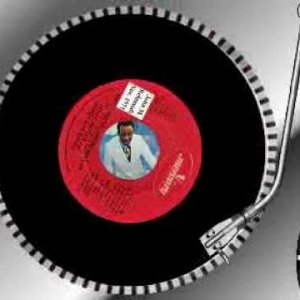You are using an out of date browser. It may not display this or other websites correctly.
You should upgrade or use an alternative browser.
You should upgrade or use an alternative browser.
Omowale Jabali : Mesopotamia, Germany and West Africa Theories
- Thread starter Omowale Jabali
- Start date
- Replies 8
- Views 4K
In reference to the Diwan and the Girgam:Biblical Patriarchs mentioned in the Diwan
"The Dīwān was discovered in 1851 by the German traveller Heinrich Barth in Kukawa, the nineteenth century capital of Bornu.[1] Its "local" name girgam appears to be derived from the Sumero-Akkadian term girginakku ("library, box for written tablets"). Hence its Arabic translation dīwān ("register, collection of written leaves"). [2] It begins with an original list of all the Biblical patriarchs (except one) before Abraham, and it places Sef and Dugu before and after Abraham. The thirteenth century identification of Sef with the pre-Islamic Yemeni hero Sayf ibn Dhī Yazan represents a conscious effort to bring the history of Kanem-Bornu in line with pre-Islamic Arab history. According to Dierk Lange's research, the form of some of the Patriarchal names can be shown to be authentic and not derived from Arabic sources, and consequently it must be supposed that there existed a local line of transmission of valid biblical information.[3]"
The following is concerning "Dugu".
The Dugu is an ancient extended funerary ceremony practiced by the Garifuna people. The Garifuna is a small-to-medium sized Central American ethnic group that has inhabited many Central American countries such as Belize and Honduras since the 17th century.[1] Their roots come from both the Caribbean and African coasts. The story goes that slaves being brought over to the Americas crashed into St. Vincent. The indigenous Caribbean Indians and Africans soon formed a community and ethnic group called the Garifuna. They were identified as the "Black Caribs" to differentiate them from the native Caribbean population.
The Dugu is a type of funeral ceremony that brings the community and families together. It is a festival that aims to bring deceased ancestors of the Garifuna to the present[2] and lasts between two days to as much as two weeks. The ceremony seeks to cure ill persons that have become sick because they have displeased the gubida (spirits).[3] Families and friends gather around drums and sing, calling the gubida to the ceremony. This ceremony is headed by the Buyai (shaman).[4] The Buyai is responsible for organizing and ordering all parts of the ceremony including food, clothes worn, sacrifices, and its length.[5] Once the Buyai believes the spirits of the ancestors are present, the sick person is given food and rum. The rest of the food and alcohol is sacrificed and the person is predicted to be cured.[6]
http://en.wikipedia.org/wiki/Dugu
Funeral Ceremonies of the Garifuna begin after the gathering of family and friends at nightfall. Women, children and men participate in their respective roles throughout the night until early morning. The men create a sacred space by making tent like roofs out of their canoe sails and afterwards, they play card games, tell traditional tales such as Ananse and enjoy song and dance. Along with the traditional dances, like the Punta and circle dances, the younger children play many games. Throughout, food is served to family and close friends as well as beverages made of rum and local roots. Outside of the immediate area the older women gather around the coffin and begin their nightlong vigil of prayer. Everyone stays till dawn because it is said that, "Anyone leaving before that time may excite the wrath of the dead and be exposed to his revenge"(Coelho pg. 174). In accordance with the Garifuna's incredible ability to adapt to the surroundings, they have incorporated Catholicism into the rite. On the morning after the wake, the body is carried to a church where customary masses and rites are preformed. The body is then buried according to Catholic rite.
The Garifuna observe a Nine-Night Wake in which the wake procedures are repeated for nine days following the death. It begins on a day so that the ninth night falls on a Saturday. This is considered the family's final farewell to the spiritual double or ahari of the dead who is believed to remain in the house after the burial. It is only now that her/his trip to the other world begins. Candles are lit, prayers are repeated and, especially regarding the Black Caribs, the wishes of the ahari are carefully attended. The favorite things of the spirit and fresh water are placed allover the altar to further satisfy the wishes.About six months later a further process of helping the ahari to its ascendancy is preformed. The immediate family does Amuiedahani or the bathing of the soul, usually the spouse and children, because the spirit has become weary and is in need of refreshment and strength to continue. The males dig a pit in the deceased's bedroom and water for the bath is prepared from herbs and leaves into which small half-baked cassava bread is dissolved. It is a short ceremony that begins with religious songs. The eldest member fills a gourd with the water and throws it into the pit saying, "Here this is for your bath"(Coelho pg. 177). Everyone then follows according to age.
http://www.clas.ufl.edu/users/afburns/afrotrop/Dugu.htm
Similar threads
Omowale Jabali :
West African Nature Spirits in the South Carolina Lowcountry
- Replies
- 4
- Views
- 2K





